
美国国家航空航天局(NASA)可持续性基地/NASA Sustainability Base. Image Courtesy of William McDonough + Partners
Spotlight: William McDonough
由专筑网mengxia,李韧编译
威廉·麦唐纳(Willian McDonough)出生于1951年2月20日,有时被誉为“引领我们时代的生态建筑师”。作为拥有建筑师,设计者,作家,教育家以及社会领袖的多重身份,威廉·麦唐纳提供了看待创新事物、以及重新审视它们对人们身体和世界的影响的全新视角。通过他的《从摇篮到摇篮》(又名《循环经济设计之探索》)的理念,威廉·麦唐纳设计的建筑物功能往往只在确认的寿命期限内起作用,在寿命期限后,它们可以被分解成各个部分,并且拆解后的核心元素依然可以解决不同的设计问题。
Sometimes referred to as “the leading environmental architect of our time,” in his roles as architect, designer, author, educator and social leader, William McDonough (born 20 February 1951) has provided a renewed look at the things that we make and their impact on both our bodies and the world. Through his Cradle to Cradle philosophy, McDonough’s buildings are designed to function for a predetermined lifespan, after which they can be broken down into their various parts whose core elements can be used anew to solve a different design problem.
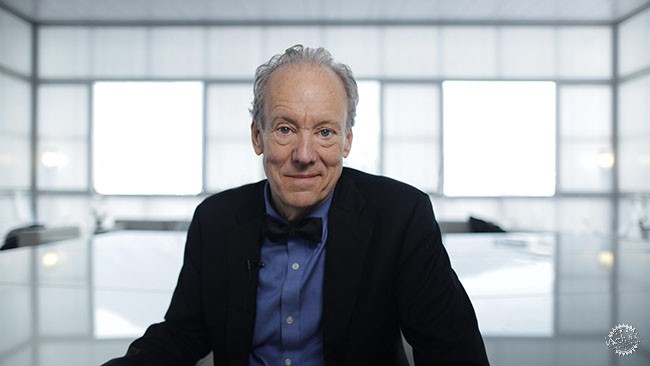
© Marta Chierego – World Economic Forum
威廉·麦唐纳在完成在达特茅斯大学和耶鲁大学的建筑学学业后,于1981年在纽约市创办了他自己的建筑事务所,即威廉·麦唐纳建筑事务所(Willian McDonough + Partners)。可持续发展是他职业生涯早期的主题,其项目包括爱尔兰的太阳能房屋,以及1985年在纽约为美国环保协会(Environmental Defense Fund,简称EDF)设计的绿色办公室。EDF协会提倡严格的空气质量标准,这个也促使威廉·麦唐纳开始对健康材料进行研究,他的设计推动了美国绿色建筑的发展趋势,并促成了美国绿色建筑委员会(US Green Building Council)的成立。
Upon finishing his architectural education at Dartmouth and Yale, McDonough opened his own firm, now called William McDonough + Partners, in 1981 in New York City. Sustainability became a theme early in his career, with projects including the design of a solar house in Ireland, and in 1985, the commission for the first “green office” in New York for the Environmental Defense Fund. The EDF brief called for strict air quality requirements, prompting McDonough to begin his lifelong investigation into healthy materials. McDonough’s design set in motion the trend of green building in the United States and lead to the formation of the US Green Building Council.
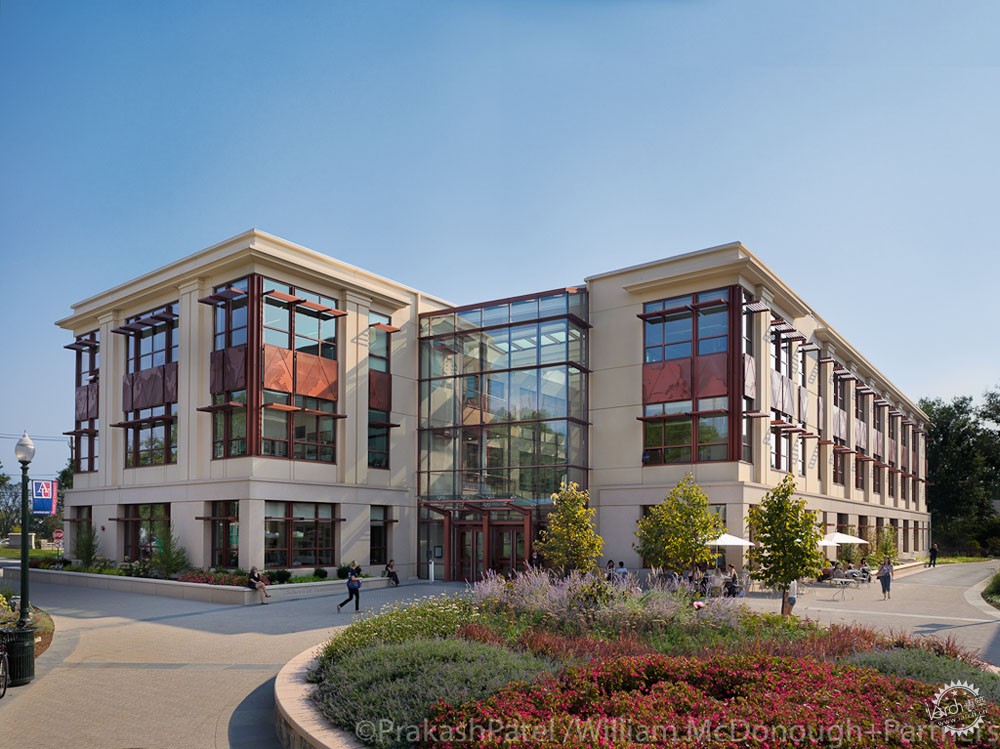
美利坚大学国际服务学院/American University School of International Service. Image © Prakash Patel/William McDonough + Partners
在随后的十年中,可持续设计有了进一步的发展,其项目有:在1995年建立的Herman Miller“温室”工厂和办公室、1997年为Gap公司设计的企业园区、1999年的耐克欧洲总部、2001年的奥柏林学院的亚当·约瑟夫·刘易斯环境研究中心,以及威廉·麦唐纳在1992年发表的第一篇关于可持续设计的论文《The Hannover Principles: Design for Sustainability》。并且在1994年,麦唐纳在被任命为弗吉尼亚大学的建筑学院院长后,将他的可持续性实践运用到了美国夏洛茨维尔市。
The subsequent decade saw further variations on sustainable design, with projects ranging from Herman Miller’s “Greenhouse” Factory and Offices (1995); the Corporate Campus for Gap, Inc. (1997); Nike’s European Headquarters (1999); and the Adam Joseph Lewis Center for Environmental Studies at Oberlin College (2001) as well as McDonough’s first treatise on sustainable design, The Hannover Principles: Design for Sustainability in 1992. In 1994, McDonough moved his practice to Charlottesville, Virginia after being named Dean of the School of Architecture at the University of Virginia.
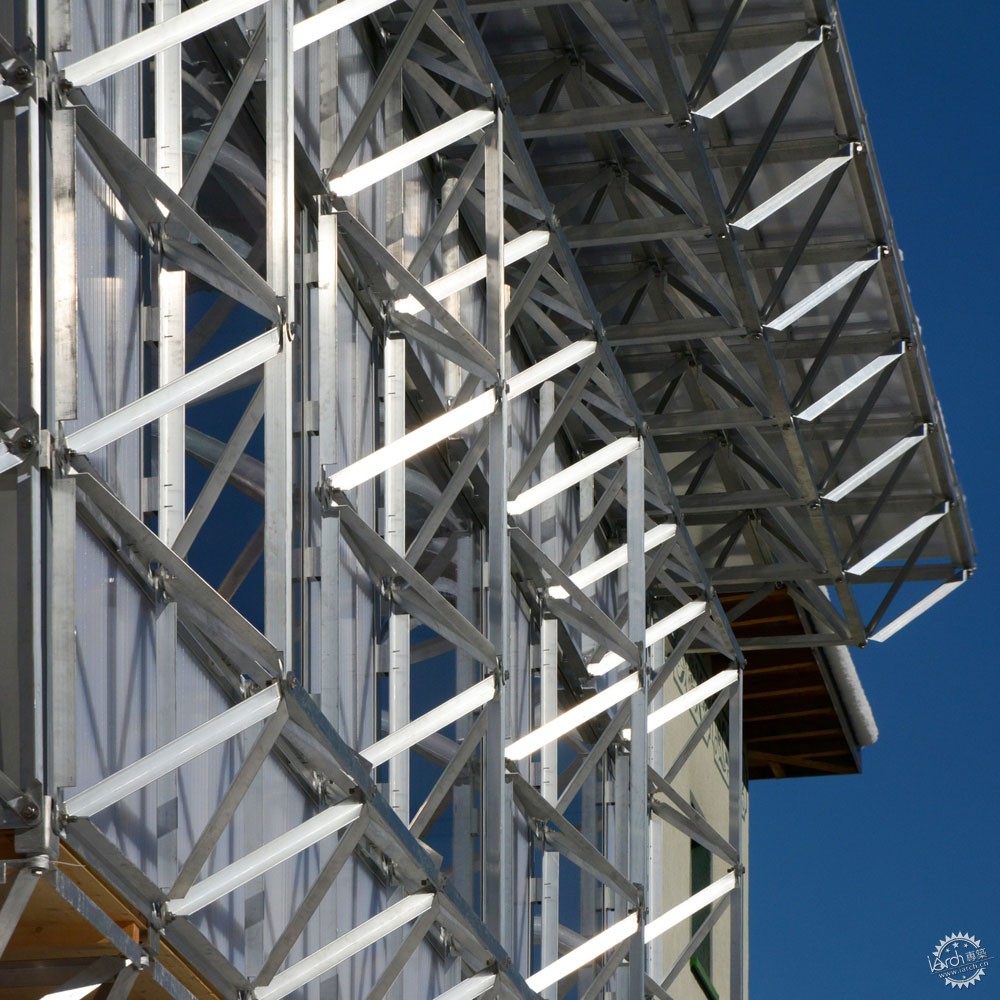
ICEhouse. Image © Bertrand Radelow
在2002年,麦唐纳合著了《从摇篮到摇篮:重塑我们做事的方式》。该宣言建议颠覆传统的“减少,再利用,再循环”的理念。为了设计能够回收的产品,材料应该由麦唐纳所称的“技术”和“生物营养素”组成。技术营养素由可以在闭环工业系统中重复使用的材料组成,而生物营养素是指材料可以分解以重新进入环境。《从摇篮到摇篮》在整个设计界迅速传播,促进非营利组织“摇篮到摇篮产品创新研究所(Cradle to Cradle Products Innovation Institute)”的诞生,并且该研究所在可持续的循环经济设计实践中鼓励创新。
In 2002, McDonough co-authored Cradle to Cradle: Remaking the Way We Make Things. The manifesto proposed to upend the traditional adage of “reduce, reuse, recycle,” calling instead for materials to be “upcycled” at the end of their initial useful life span. To design products able to be upcycled, materials should be composed of what McDonough refers to as “technical” and “biological nutrients.” Technical nutrients consist of materials that can be reused in a closed-loop industrial system, while biological nutrients refer to materials that can break down to reenter the environment. Cradle to Cradle was quickly disseminated throughout design circles, and has since inspired the non-profit Cradle to Cradle Products Innovation Institute, which empowers and rewards innovation in the practice of sustainable, circular-economy design.
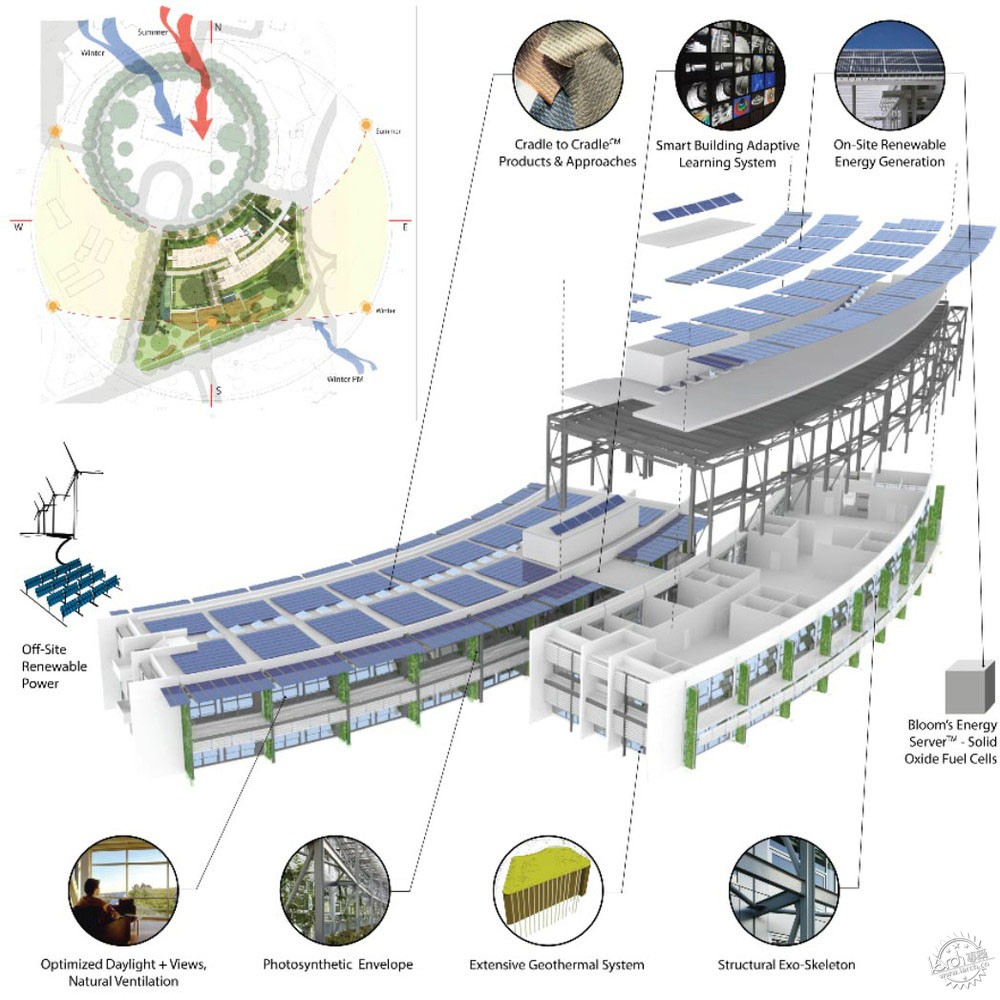
分析图,NASA可持续基地/Diagram, NASA Sustainability Base. Image Courtesy of William McDonough + Partners
通过这一次的突破,麦唐纳一直致力于环保和具有社会意识的设计,帮助Brad Pitt建立的“Make It Right基金会”的环境使命的标准,以便为卡特里娜飓风的受害者提供住宅。麦唐纳也在新奥尔良第九区设计了可持续复式建筑,名为“流动房屋”。麦唐纳最近的项目包括2016年设计的ICE住宅,即循环经济住宅),这是一种可移动的“奇迹框架”,它使用任何可用的材料来创造住房,另外还有 2014年Method Manufacturing Facility项目,这是在芝加哥棕地现场建立的生产可持续产品的新工厂,以及2011年美国宇航局可持续发展基地项目,这是为了太空计划而建立的满足LEED铂金标准的“活体实验室”项目。麦唐纳同时也是斯坦福大学第一个“活体档案”的主要成员,并且这个档案馆中几乎记录了所有建筑师的日常时刻。这个档案馆创立的目的旨在改善人类记忆和记录日常生活的方式。
Since that breakthrough, McDonough has continued to focus on environmentally and socially-conscious design, helping to establish criteria for the environmental mission of Brad Pitt's Make It Right Foundation in their bid to provide architect-designed homes for victims of Hurricane Katrina. McDonough himself contributed designs for a sustainable duplex in New Orleans’ Ninth Ward known as the “flow house.”
Recent projects of McDonough’s have included ICEhouse (2016), a transportable “wonderframe” that uses any available materials to create shelter; Method Manufacturing Facility (2014), a new factory for sustainable products on a Chicago brownfield site; and the NASA Sustainability Base (2011), a “living laboratory” for the space program that outperforms LEED platinum standards. McDonough is also the subject of Stanford University's first "living archive," where nearly all of the architect’s daily moments are recorded in an effort to change the way we as humans remember and record our daily lives.
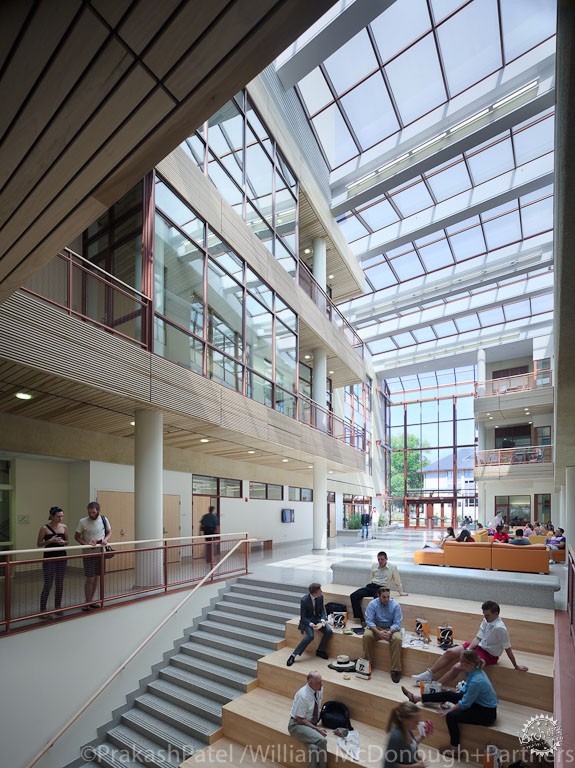
美利坚大学,国际服务学院/American University School of International Service. Image © Prakash Patel/William McDonough + Partners
通过威廉·麦唐纳的成功事例,他重新叙述了建筑与环境的关系,并且认为这种关系只能通过共生的态度来维持,“我想要看到的是人们如何让人类对大自然给予帮助,同时运用这种方法,大自然也能对人们有所回馈。”
Through his successes, McDonough has changed the discourse on architecture’s relationship to the environment, a relationship he believes is only sustainable through a symbiotic attitude: “What I’m trying to look at is how do we make humans supportive of the natural world, the way the natural world is supportive of us.”
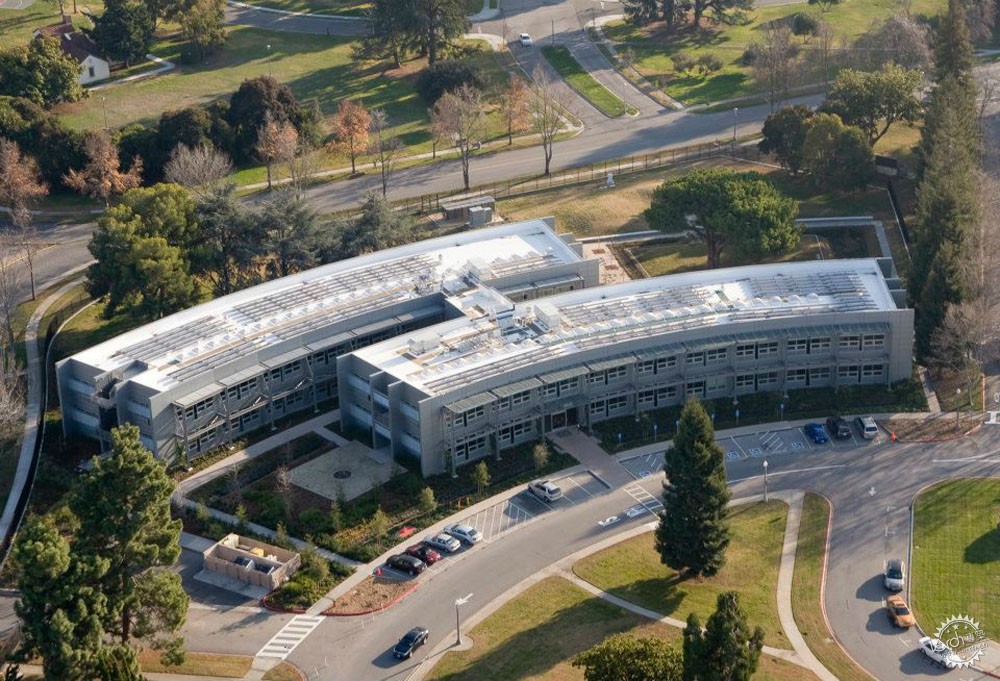
Courtesy of William McDonough + Partners
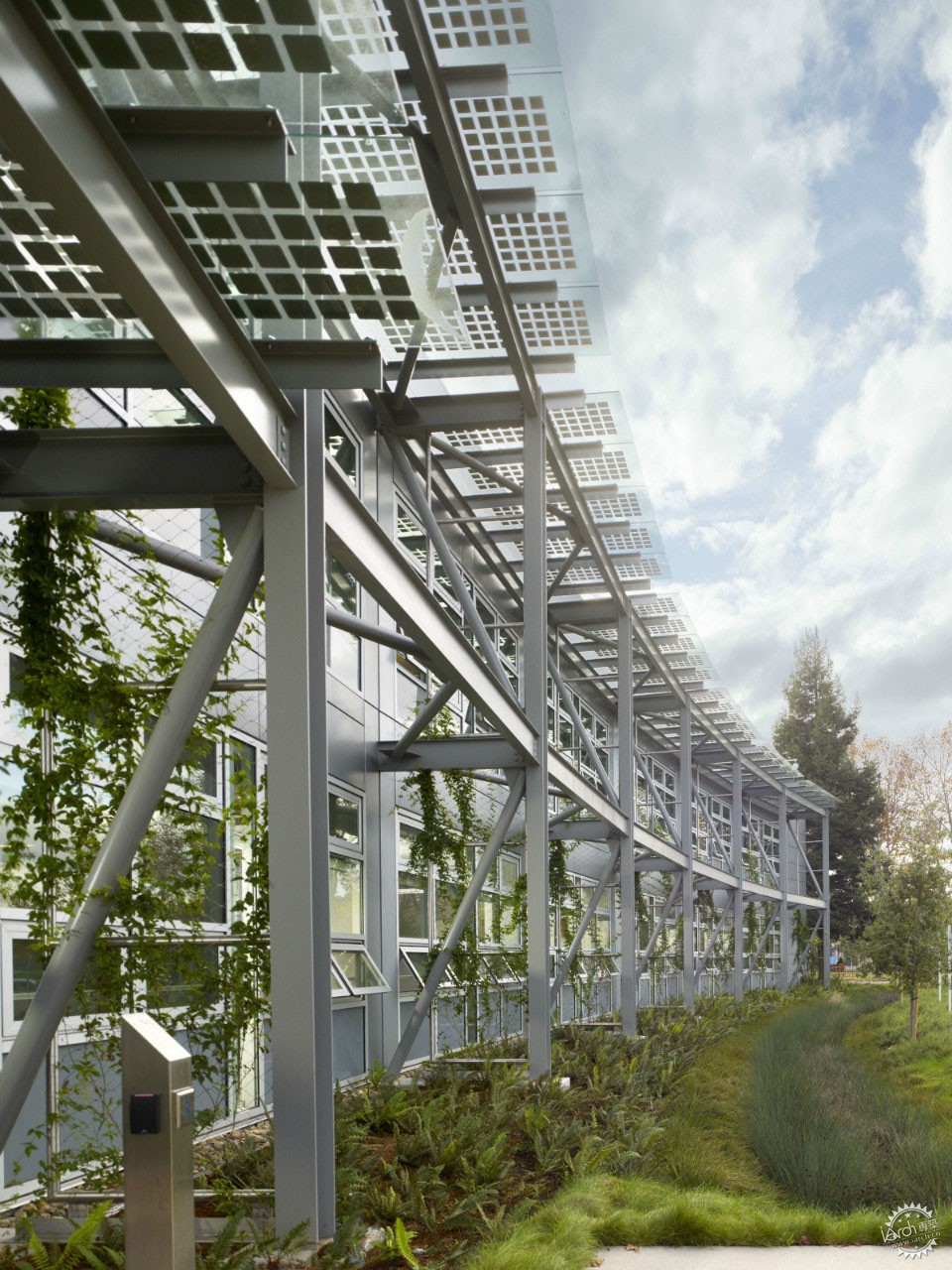
Courtesy of William McDonough + Partners
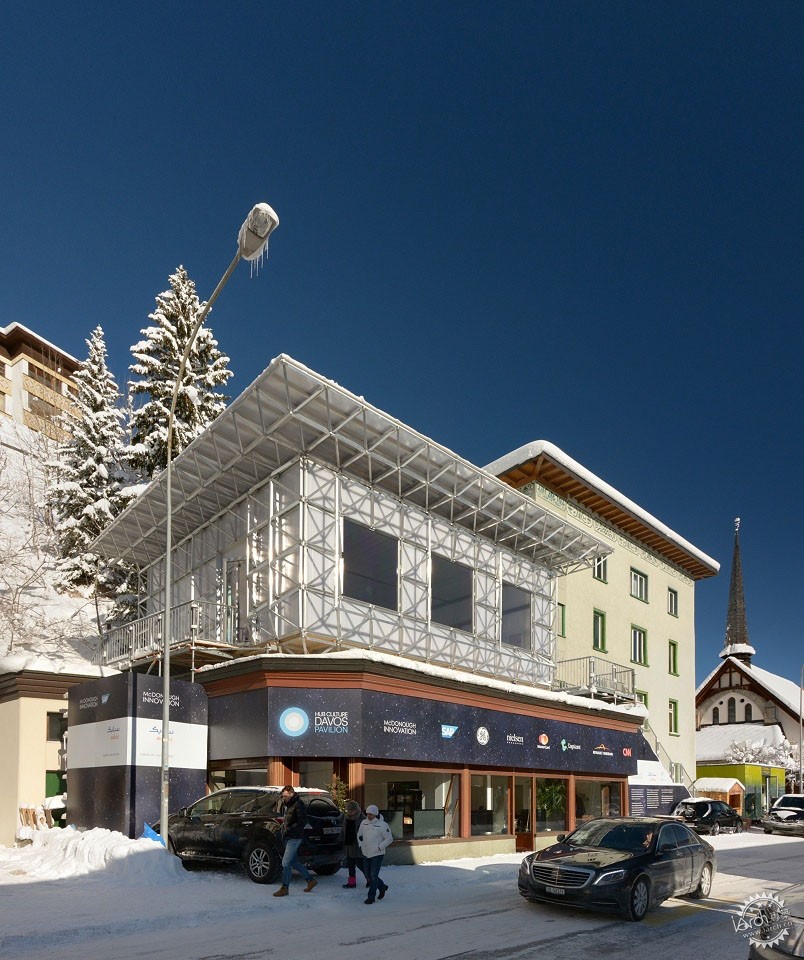
© Bertram Radelow, courtesy of William McDonough + Partners
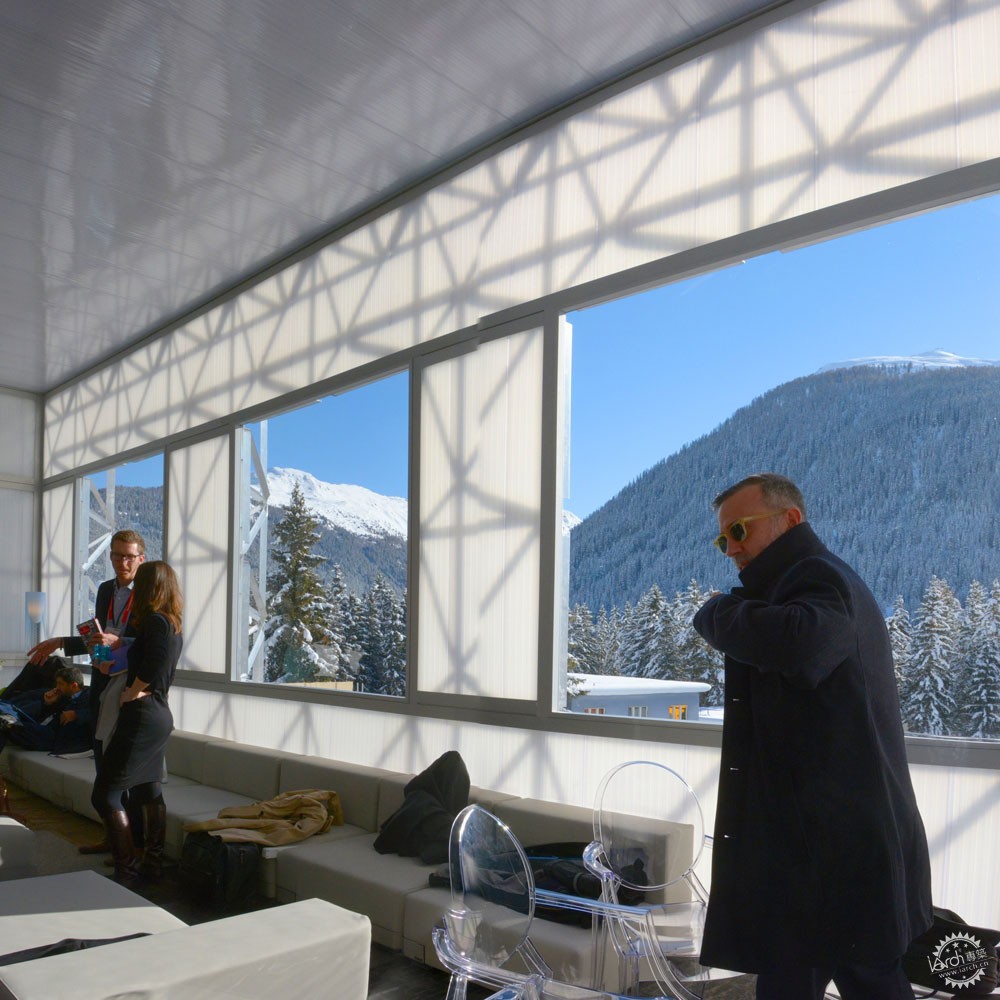
© Bertram Radelow, courtesy of William McDonough + Partners
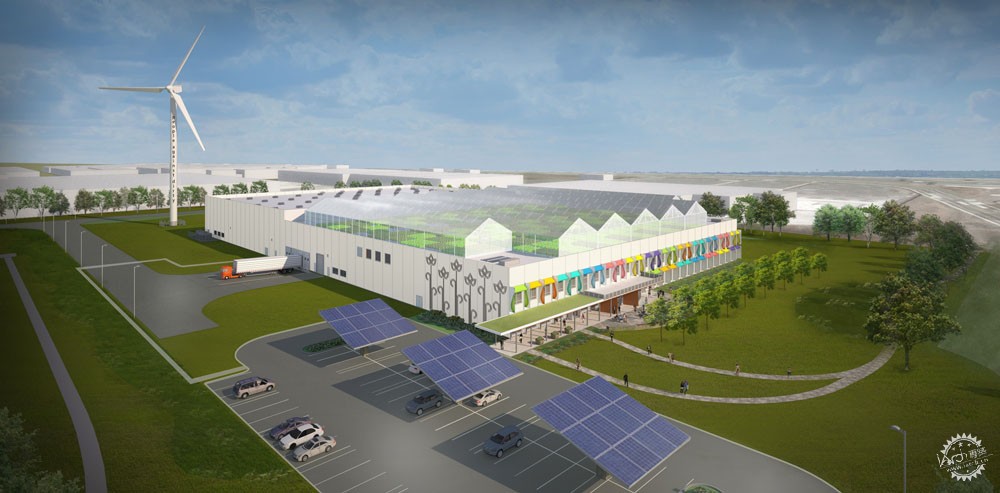
© William McDonough + Partners
|
|
